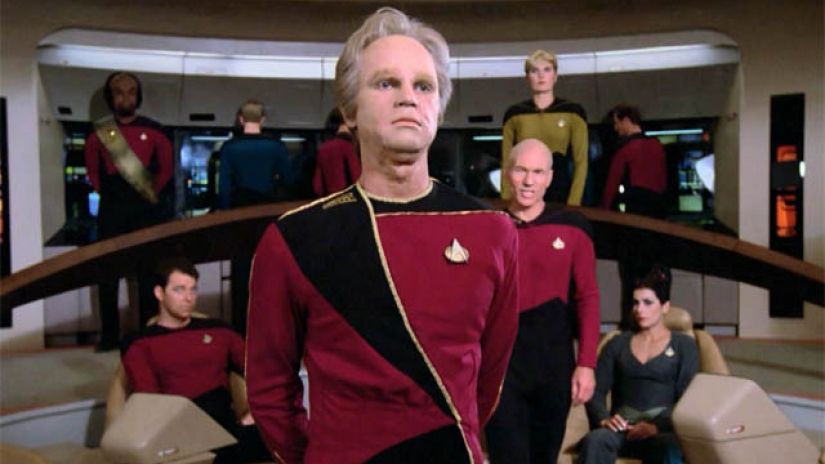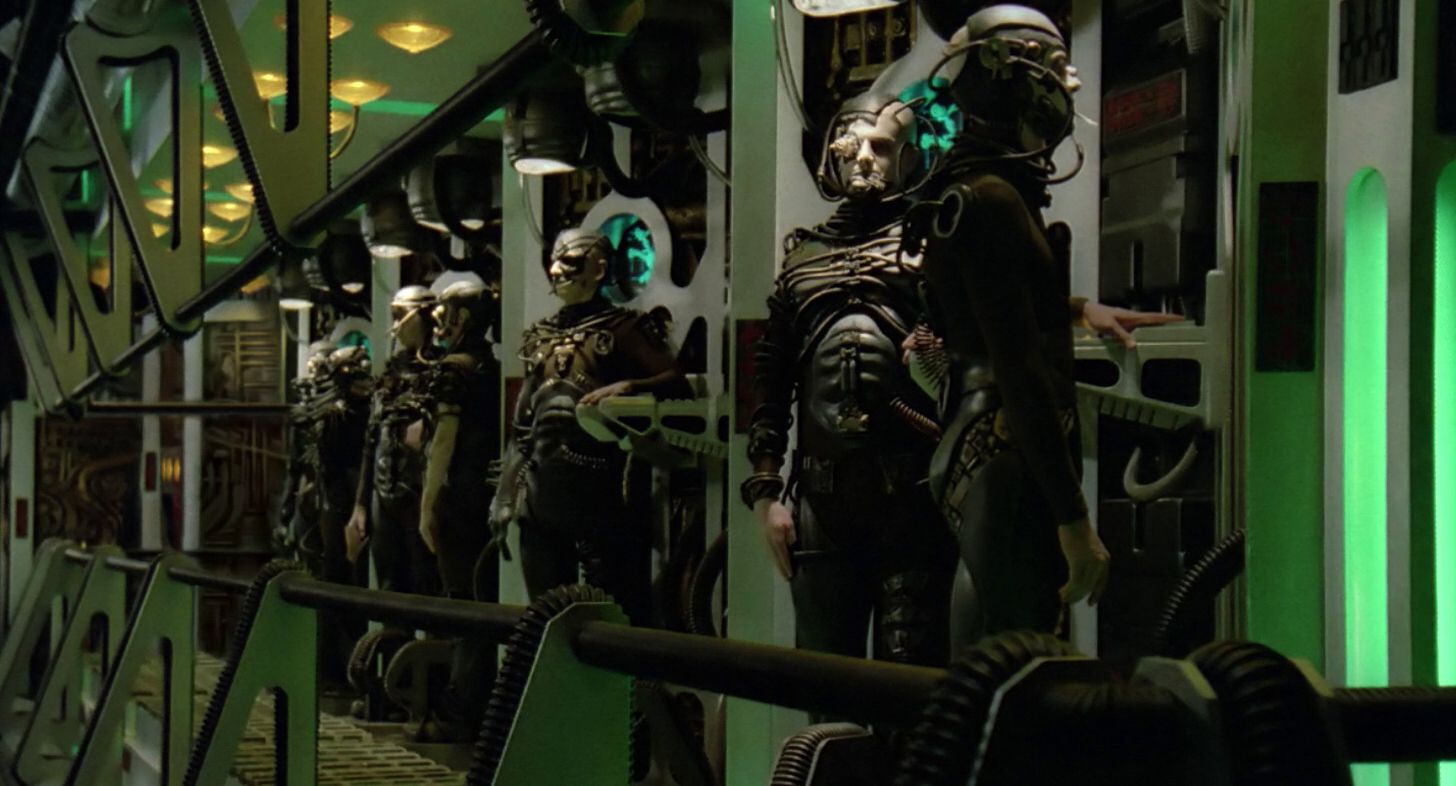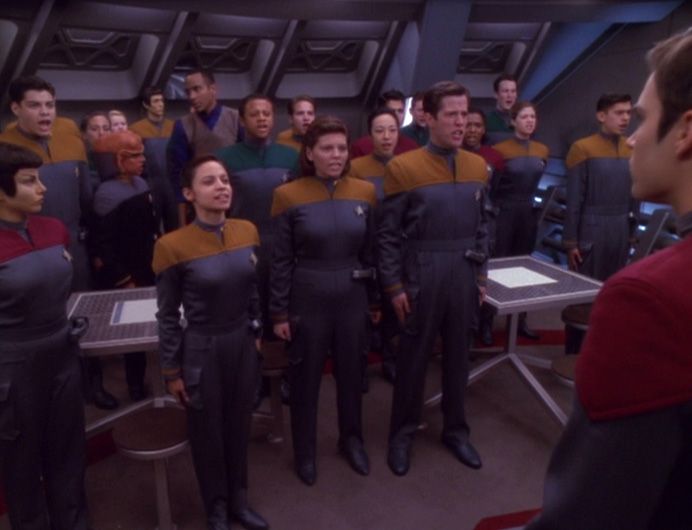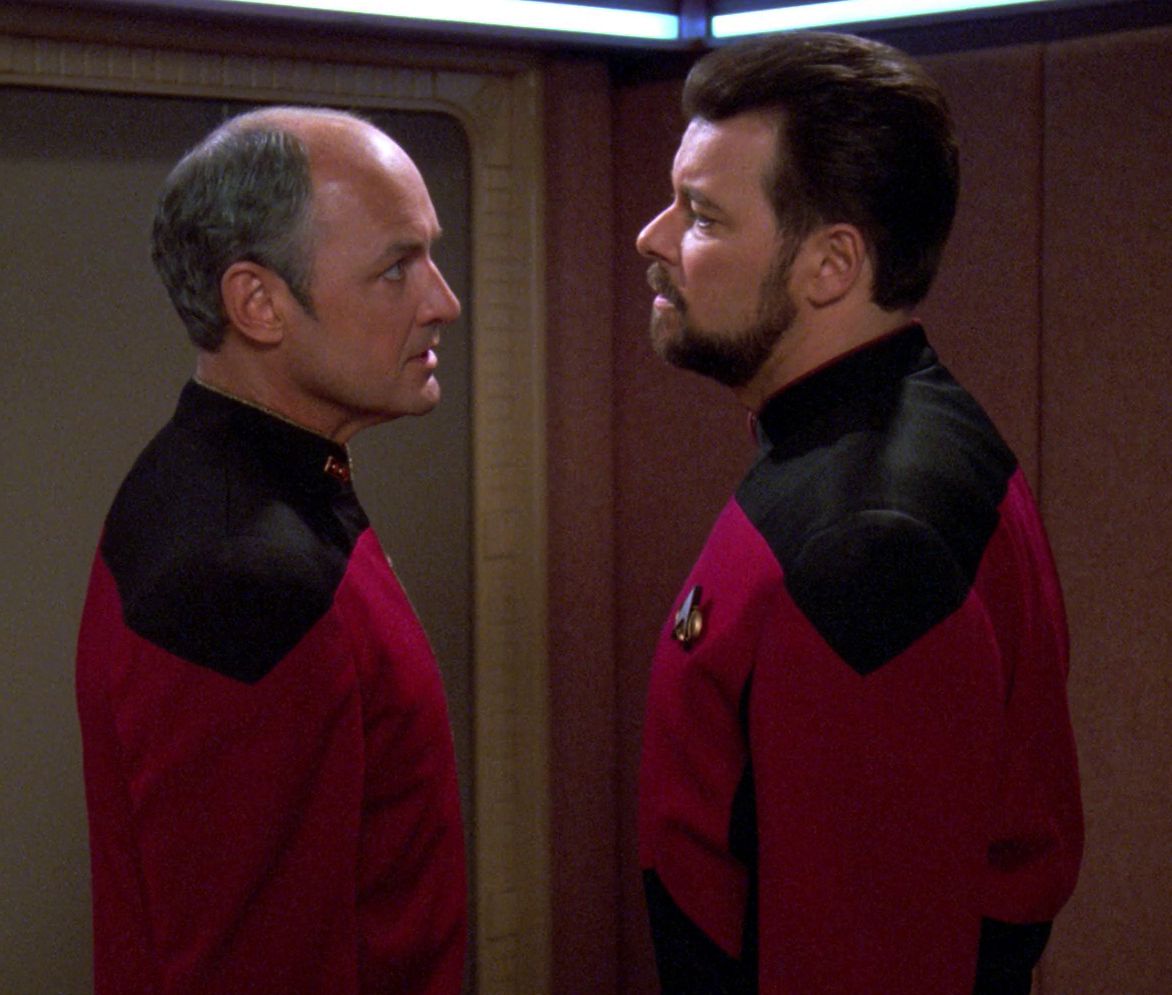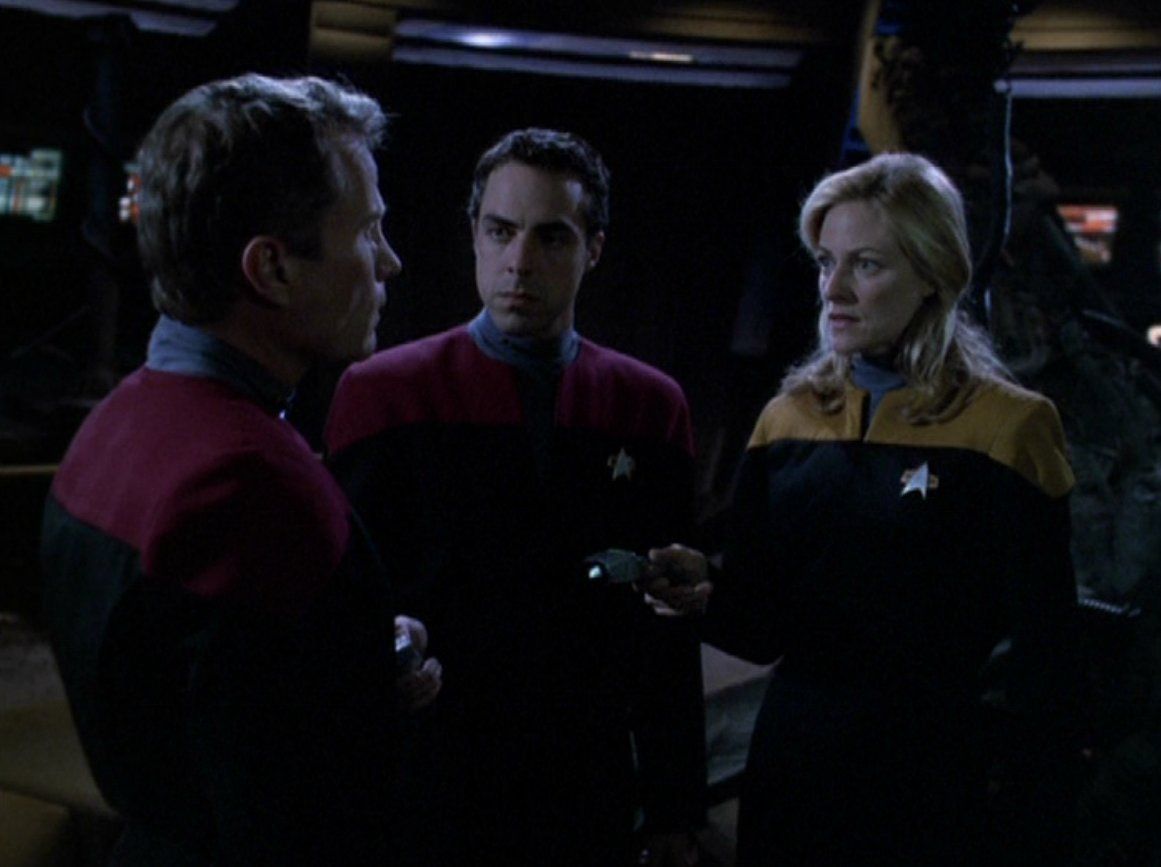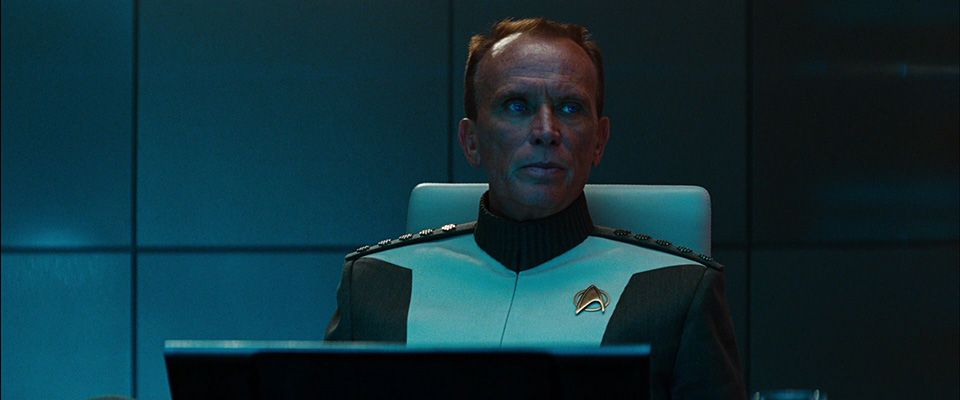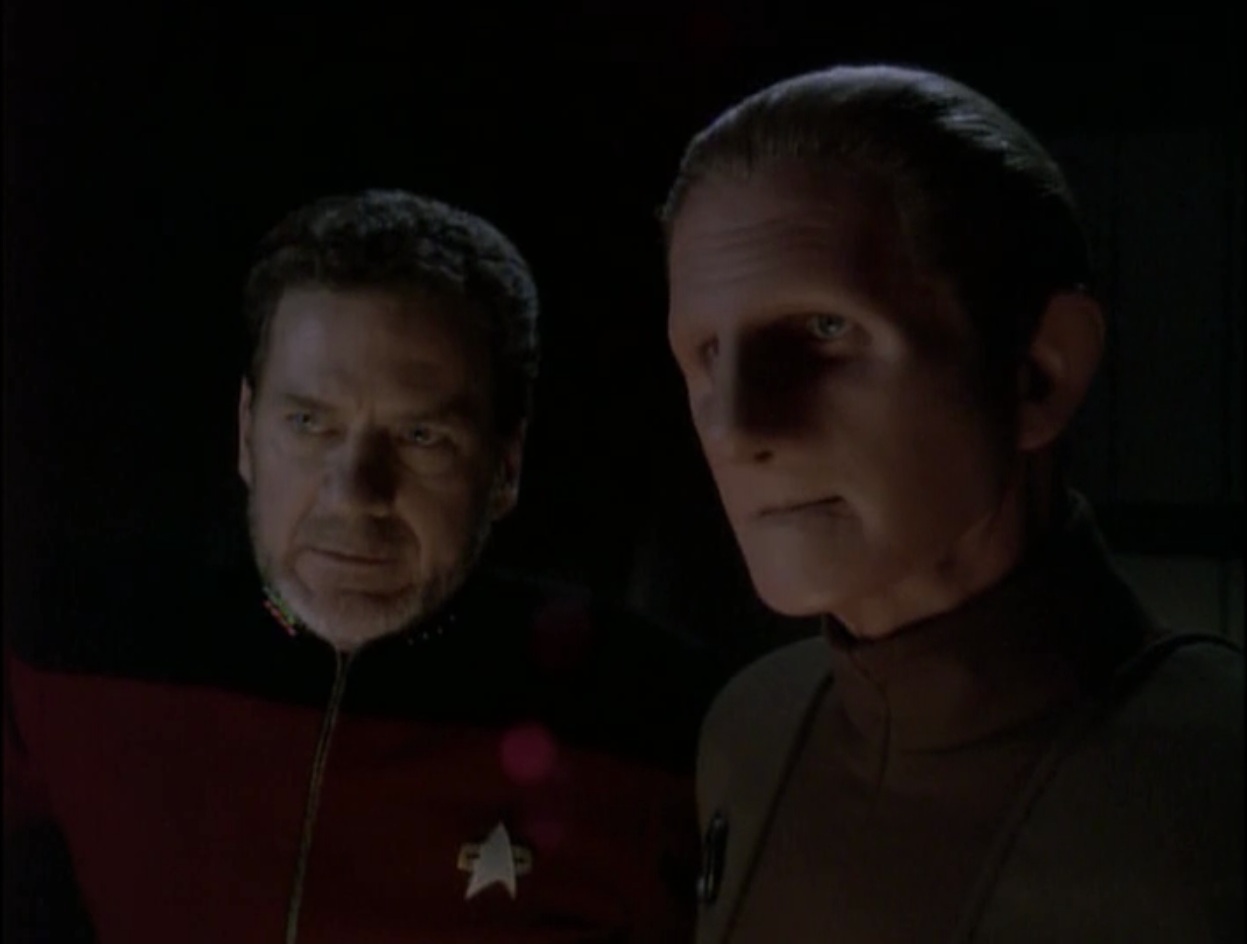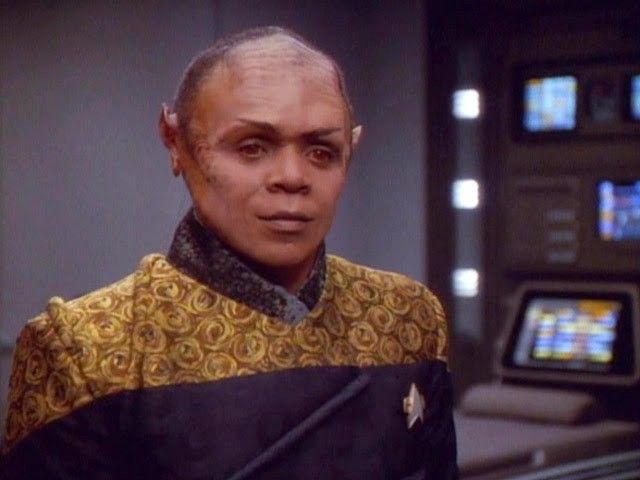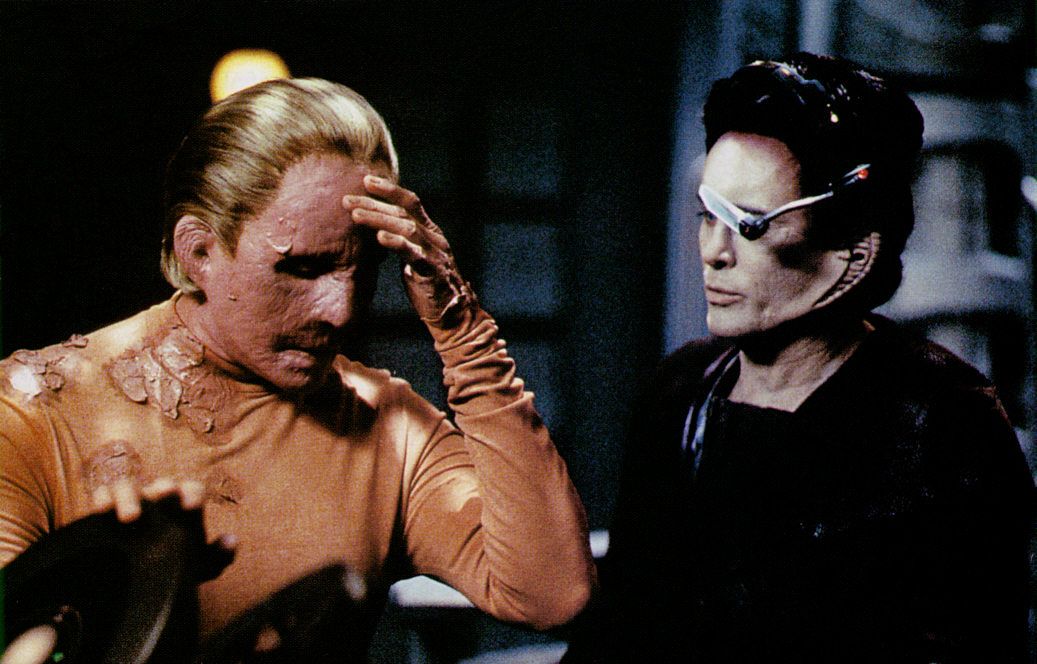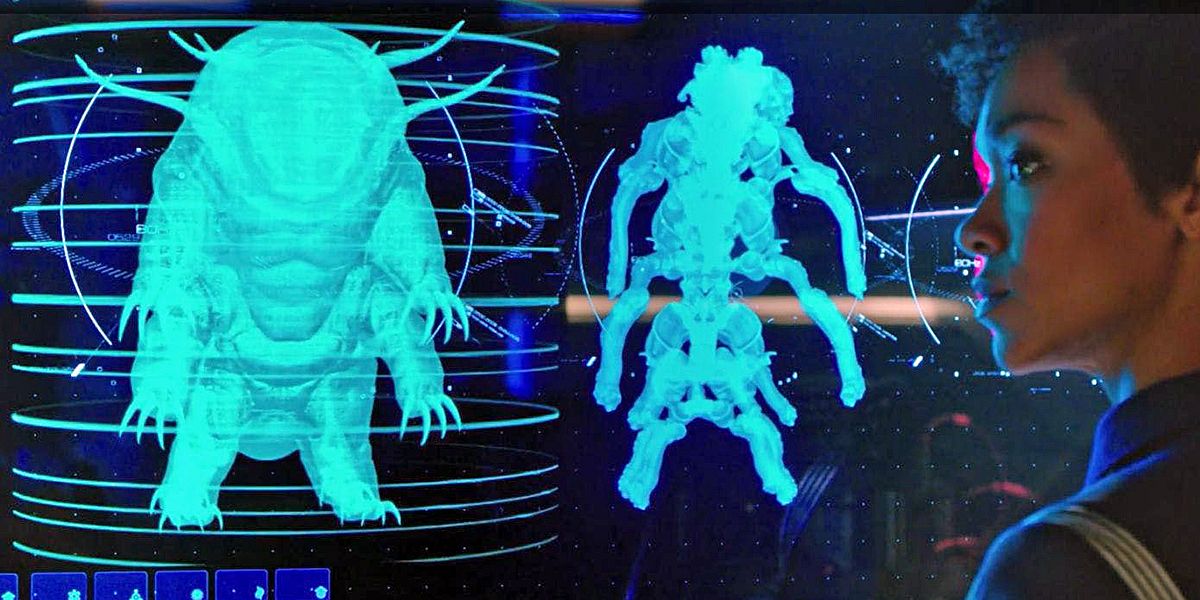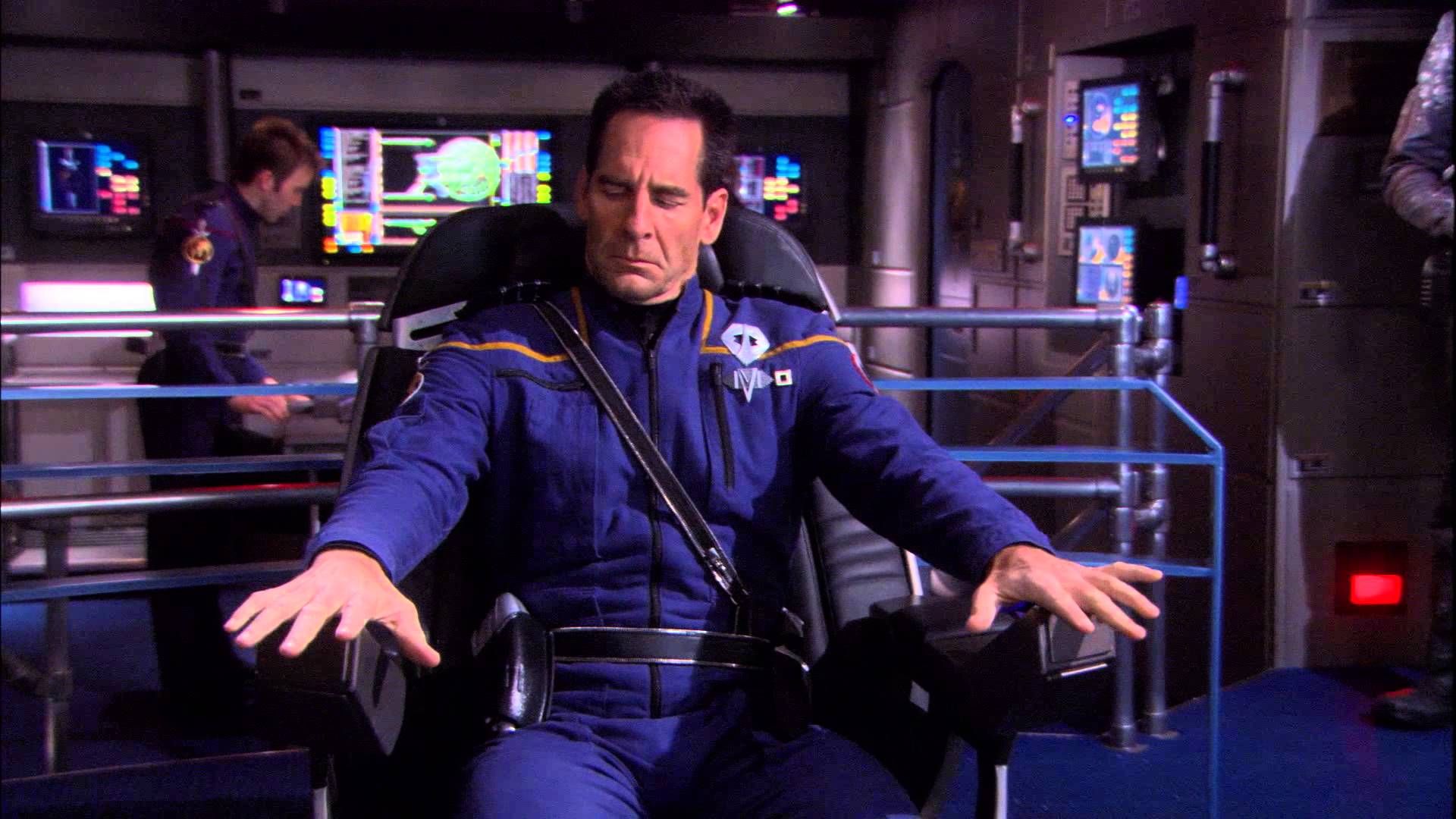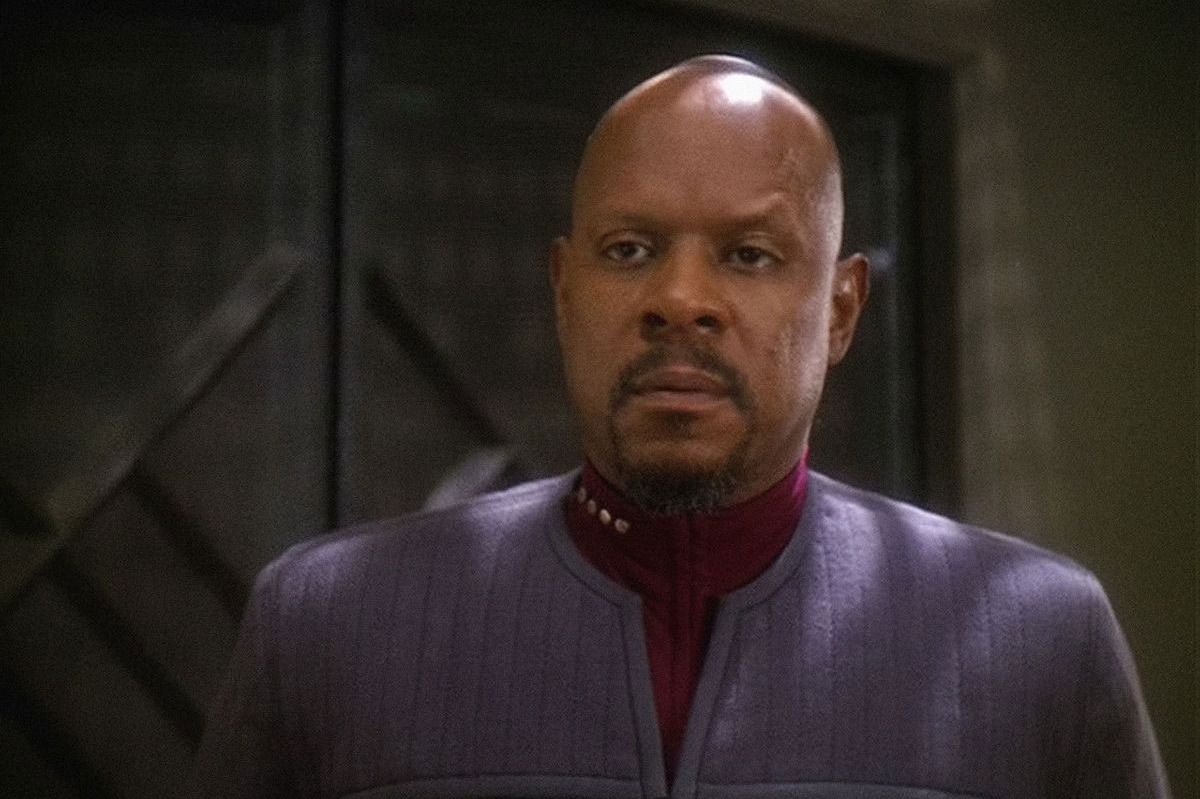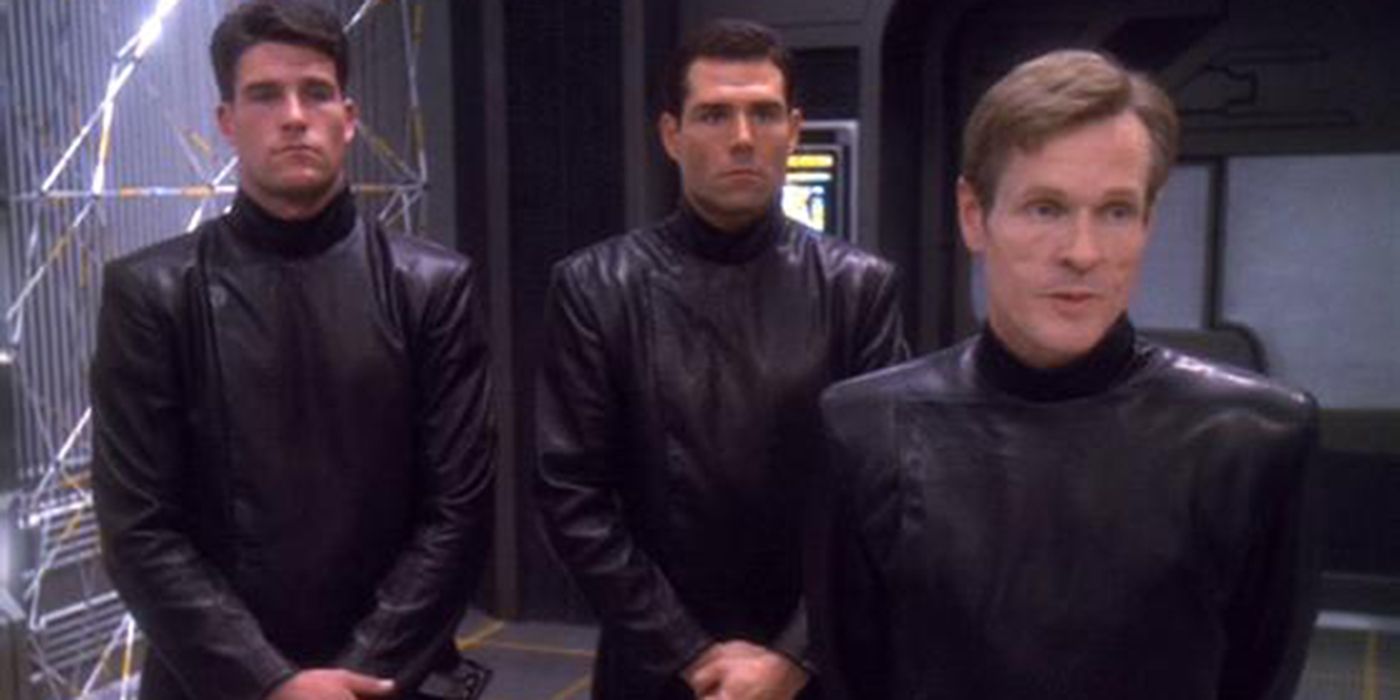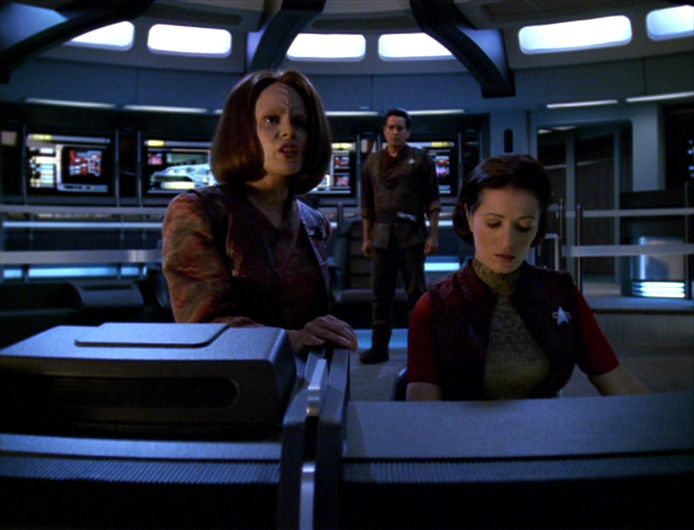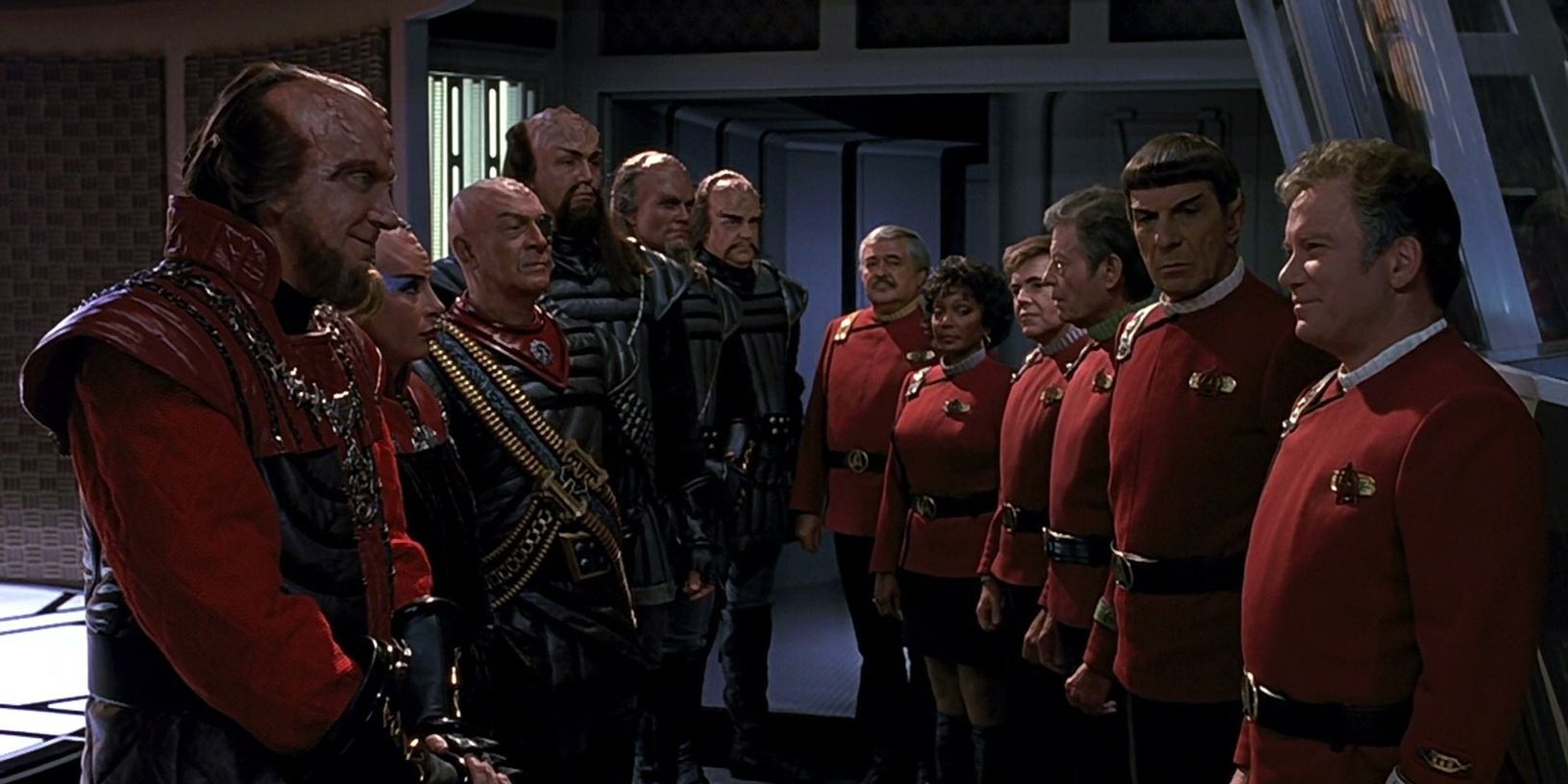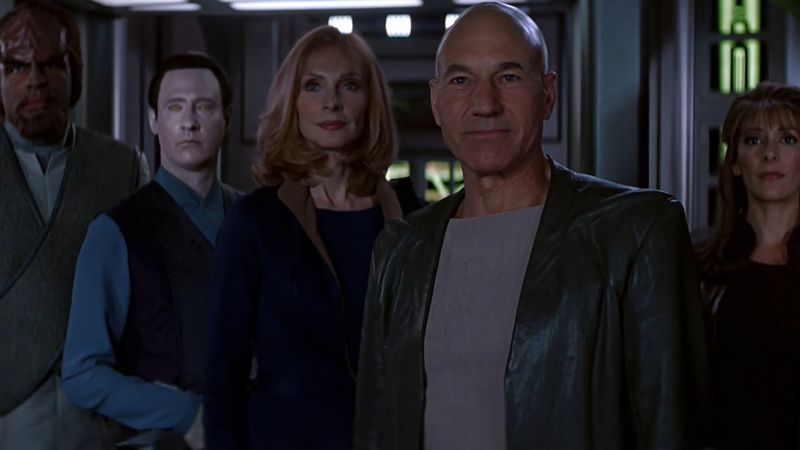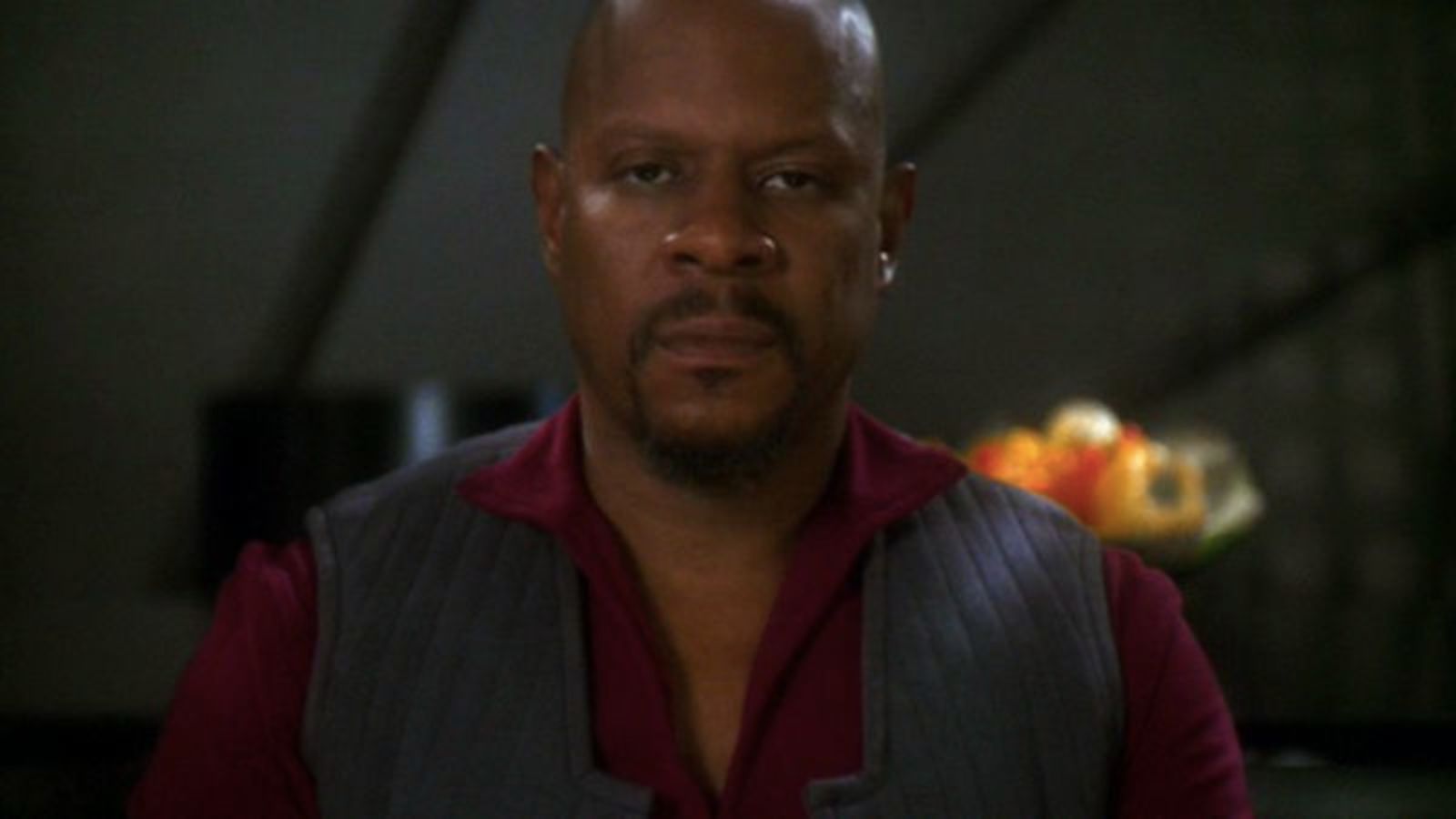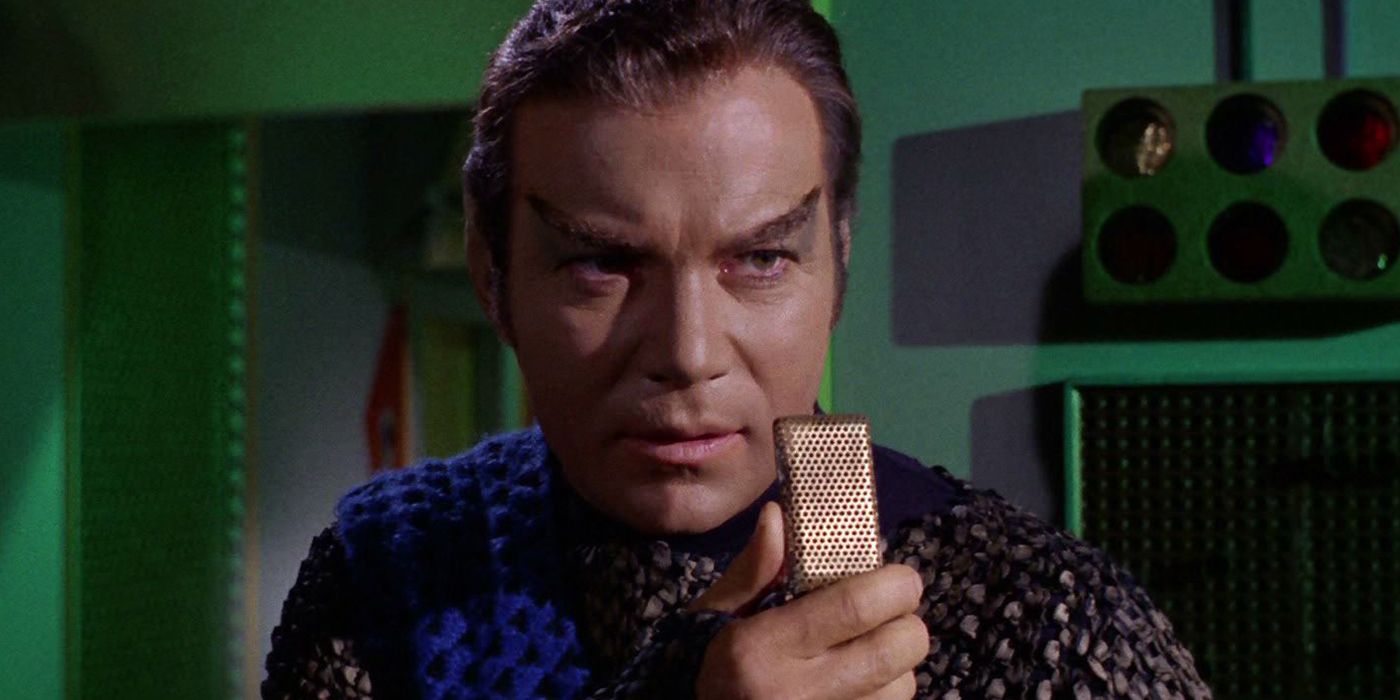When Star Trek was created, the idea of the Federation was a peaceful coalition of worlds. Starfleet had the dual purpose of being the military force defending the Federation and also exploring new worlds and cultures. That intriguing dichotomy has been at the heart of the entire saga. Sometimes, Starfleet wants to maintain peace and stability and just explore. Other times, they are a true military unit willing to fight back by any means. It took a new dimension during the Dominion War as Starfleet had to abandon exploration and become a full military organization to defend the Alpha Quadrant. Discovery shows a Starfleet still trying to explore while fans are eager for how the new series will show them transforming.
What this means is that, like any organization, Starfleet has made some very not-okay moves. Sometimes, it’s the fault of a single captain who snaps or takes the wrong measures. Other times, it’s the total high command making some bad decisions. Even those who defend their actions as being right make moves that paint Starfleet in a horrible light. That was especially true in Deep Space Nine where Starfleet had to fight dirty to win. Yet sometimes, the bureaucracy of the organization can become its own worst enemy and cause some messes. Whether a single man or the organization, the Federation’s space arm have made more than its share of critical mistakes. Here are 20 times Starfleet was totally in the wrong and weakens the moral superiority they claim.
20 Kids on Starships
TNG showcased that Starfleet had changed a lot over the decades. It was less military-prone and more about exploration. They allowed more species to join up and serve on ships. The biggest shift was that families were allowed to be on the ships as well. This included children, complete with classrooms. It was argued it was good as having family close by aided the crew morale and provided a good chemistry for the ship. However, it becomes rather dark when you consider how many threats a starship faces. The TNG episode “Disaster” has many children in danger when the ship is hit by a stellar storm.
Even worse is the Battle of Wolf 359 where 39 Federation ships were destroyed by the Borg. That included thousands of civilian casualties and showed that putting kids in danger so much was a bad idea. It’s assumed this ended with the Dominion War turning Starfleet into a full military force. Yet to have children exposed to such dangers on a constant basis wasn’t a smart policy in the first place.
19 Keeping the Borg Secret
Enterprise was often criticized for trying to retcon much of Star Trek lore. But it also did a good job filling in some blanks. In “Regeneration,” the crew discovers some mysterious figures frozen in the Arctic. They turn out to be Borg who were stranded in the area from the events of First Contact. Revived, the Borg soon start to attack the ship and try to assimilate the crew. It takes a lot of effort but they are able to stop the drones. However, they did manage to send a message into deep space to let the Borg know about Earth.
While fun, the episode creates a major plot hole in the Borg appearing a century earlier than they did in TNG. The explanation is that Starfleet thought these were just some renegades of some sort and classified the whole thing. The problem being, it was so top secret that it meant that when the TNG crew met the Borg, they had no idea what they were facing. Keeping crazy encounters quiet may be smart sometimes but this threat was something Starfleet should have been a lot more on the ball with.
18 Created a Civil War
The first season of Next Generation is the worst. It lacked the great writing and acting that would make the show so beloved. However, the episode “Too Short a Season” is notable in how not everyone in Starfleet was a noble person. The Enterprise heads to a planet long mired in a civil war. A federation Ambassador has been taken hostage and his captors demand the legendary Admiral Jameson be the one to negotiate for him. Jameson is famed for helping negotiate a peace treaty on the planet decades earlier. An elderly man, Jameson has been taking special drugs so he can appear to be younger for this.
The truth eventually comes out: The planet’s own leader is the one who took the hostages. He had abducted hostages long before and Jameson secretly gave in to his demands for weapons. To try and “balance” it out, Jameson also provided weapons to the opposing side. In other words, his “peace agreement” caused forty years of civil war. Jameson ends up passing away in agony thanks to his youth treatments and clearly feeling the pain of causing so much destruction
17 The Red Squad Disaster
On Deep Space Nine, Red Squad had been mentioned as the best of the best of Starfleet cadets. Nog in particular was seen to practically worship them. In the episode “The Valiant,” Jake and Nog are lost in enemy territory and rescued by the title vessel. It seems someone in Starfleet had the bright idea of having Red Squad cadets go on a training mission with only a handful of senior officers. An attack basically wiped out the adults so cadet Tim Watters self-promotes himself to Captain. He then follows the last orders to spy on a new Jem’Hadar battle cruiser.
Watters decides he’ll use a fancy new anti-matter weapon to destroy the ship. Jake warns him this is insanity but the entire crew (including Nog) are so enthralled by Watters that they fail to see he’s a pill-popping guy in over his head. They pull the attack…and it doesn’t so much as scratch the enemy ship. The “elite” Red Squad instantly turn into the mortified kids they really are as the Jem’Hadar attacks. Only Jake, Nog and another crew member are able to escape. As Nog tells that woman, Watters may have been a good man “but he was a bad captain.”
16 Creating a Cloaking Device
A major question for years among Trek fans was why the Federation didn’t have the cloaking devices the Klingons or Romulans did. The answer finally came in the TNG episode “Pegasus.” Riker is surprised by the arrival of his old captain, now-Admiral Pressman (Terry O’Quinn). Years before, they were among the few survivors of the Pegasus when an experiment went wrong. Picard finds something odd about Pressman wanting to rediscover the ship and checking the reports, he discovers there had been a mutiny on board.
It turns out the Pegasus was experimenting with a cloaking/phasing device. An outraged Picard cites that the Treaty of Algeron, which ended the war with the Romulans, expressly forbade the Federation from ever developing cloaking. Pressman fires back that all that did was cost the Federation a major advantage. The Pegasus was thus involved in an illegal experiment that killed many on board. Pressman is taken into custody with Riker also getting some flack for a serious violation of a key treaty rule.
15 The Equinox
Even thousands of light years away from home, Kathryn Janeway did her best to keep to Starfleet rules. Even though taking shortcuts would get them home faster, Janeway refused to betray her training. Sadly, not everyone in Starfleet was cut from the same cloth. In the two-part Voyager episode “Equinox,” the Voyager crew find the title ship, another Federation vessel lost in the Delta Quadrant. Their happiness is short-lived as it turns out Captain Ransom and his crew have decided that since there’s no Starfleet out here, then the rules don’t apply.
This includes using the living creatures of a planet as fuel for their failing engines. This sparked a short war with an alien race but Ransom openly quoted Starfleet regulations on “take any measures to help your ship” to excuse genocide. He also abducted Seven of Nine and the holographic Doctor to steal their technology. Ransom did atone in the end, realizing he was wrong and sacrificing his ship to stop a threat. Yet it showed what happened when Starfleet officers ignore their oaths.
14 Starting War with the Klingons
For most of Star Trek Into Darkness, Admiral Marcus comes off as a tough but good commander. He helps Kirk and the group hunt down the renegade William Harrison. When Harrison is caught, Kirk realizes something is up. He finds that the torpedoes Marcus ordered him to fire each hold a frozen person. Harrison reveals himself to actually be Khan who was revived from hibernation and used by Marcus as part of his wider plot.
Marcus is convinced that war with the Klingons is inevitable and Starfleet isn’t ready for it. So, he’s decided to just go ahead and start it himself. He has his own super-ship that he’s prepared to use in a full-scale attack on the Klingon home world. He also tries to destroy the Enterprise before they can expose him. Marcus ends up paying for his tricks at Khan’s hands (literally) and it’s clear his madness nearly ruined the Federation.
13 Framing the Founders For Attacks
The Dominion War was a major shake-up for the Federation. After decades of peace, even Earth was not immune to attacks. In the two-part DS9 episode “Homefront/Paradise Lost”, a bombing occurs at a major conference on Earth. This is followed by the defensive grid going down and thus the Founders are blamed. Sisko and Odo head to Earth to help investigate but realize even the changelings couldn’t have gotten so deep into Starfleet security.
It turns out it wasn’t the Founders at all. Admiral Leyton had become convinced that the Federation was too weak to handle the Dominion threat properly. He thus has faked this attack as part of a plan to basically seize control and turn Earth into a military dictatorship. He even frames Sisko as a Changeling himself. The coup is stopped and Sisko himself notes that Leyton was acting out of a love for the Federation, however misguided. Yet coming close to making them as bad as the Cardassians was a poor move.
12 Splitting Tuvix
For the most part, Captain Janeway wasn’t as rule-breaking as other captains in Starfleet. However, one of her darker moves was in the Voyager episode “Tuvix.” A transporter accident ends up merging Neelix and Tuvok into one being. He has the memories and skills of both but also his own individual feelings. He’s soon accepted as a crew member with great insight, a fantastic cook and a good aid. Eventually, a way to split him back to normal is found…only for Tuvix to announce he doesn’t want to die.
He has become his own person, a fully rounded individual and wants the chance to continue. Janeway disagrees, feeling it’s better to get Neelix and Tuvok back. When Tuvix refuses, he’s hunted by security to be dragged to Sick Bay. Tellingly, the Doctor refuses to perform the procedure as it violates his oath to do no harm. So Janeway does it herself. Even she has to doubt in what she did as to get back two crewmembers, she basically murdered another.
11 The Founder Virus
A big turn for Deep Space Nine was Odo coming down with a horrible illness that threatened to kill him. He was forced to return to the Founders, his shape-changing people who were the leaders of the Dominion. They allowed Odo to enter “the Great Link” to cure him while also making him humanoid (Odo would regain his shape-changing later). In the final season, it’s revealed that the illness also spread to the Founders. This just makes the changelings even more brutal than ever.
To the horror of the DS9 crew, Bashir discovers this is no illness but a genetically engineered virus. It was the work of the black ops Section 31 who infected Odo so he would spread it to the rest of the changelings. Even worse, rather than doing this on their own, Section 31 had the backing of some Starfleet admirals. The war may have been desperate but ordering the genocide of an entire species to win it was a betrayal of what the Federation stood for.
10 Exploiting the Tardigrade
Discovery has been debated a lot among fans for some of its wild moves. Among them was the revelation the title ship used a “spore drive” which allowed it to achieve speeds faster than any other ship in Starfleet. The reason why was the Tardigrade. These alien creature are held captive inside the ship’s warp drive so it can harness the spores they emit and power the ship. This is pure exploitation of a sentient species and it’s clear the creatures hate it.
You can cut a tiny bit of slack on Captain Lorca doing this as (spoiler alert) he’s from the brutal Mirror Universe where such horrible methods are commonplace. But this means that the regular Universe Starfleet gave the okay for this to happen in the first place. The fact that the spore drive hasn’t popped up in series set later in the timeline indicates it was abandoned. But that doesn’t excuse it being used in the first place.
9 Refusing to Cure a Species
The Prime Directive is Starfleet’s highest law. It dictates that no crew member is to do anything that could interfere with the proper evolution of a species. Some captains do skirt it (like Kirk) but most hold to it totally. Sadly, this often means having to make some harsh moves. In the Enterprise episode “Dear Doctor,” the Valakians reach out to Starfleet for help with a plaque hitting their planet. It takes a bit but Phlox does find a cure and that seems to be that.
However, Phlox looks deeper and discovers this isn’t some strange disease but rather a genetic epidemic. Which means it’s part of the species’ evolution. Archer thus decides that curing it will be breaking the Prime Directive. It’s a bitter argument among the crew but in the end, the ship takes off and condemns an entire species to die over a biological technicality. This is one time the Prime Directive was ruining, not helping, a planet.
8 Poisoning a Planet
Never get on Benjamin Sisko’s bad side. Many a Cardassian or other villain has learned that lesson the hard way. One who didn’t listen was Michael Eddington. A security officer on Deep Space Nine, Eddington had won Sisko’s respect as a tough guy willing to aid even if he was duty bound to orders. However, Eddington turned on Sisko to join the Maquis. He claimed he was tired of the Federation sucking up to the Cardassians over their own citizens. Sisko made a vow on the spot to do what it took to bring Eddington down.
He got his chance in “For the Cause.” Eddington is leading his Maquis squad in attacking Cardassian colonies with Sisko in pursuit. In a move even his own crew couldn’t believe, Sisko detonates a poison missile in the air of a Maquis colony. He does time it so the inhabitants can evacuate. Sisko threatens to do the same to every Maquis colony he can find. Realizing he’s serious, Eddington gives himself up. It shows what happens if you push Sisko too far.
7 Section 31
Its origins are steeped in mystery. The few agents involve claim it’s existed as long as Starfleet itself or even older. It is the equivalent of the Romulan Tal Shiar or Cardassian Obsidian Order. Section 31 is the black-ops division of Starfleet, a unit so ultra-top secret that it wasn’t until Deep Space Nine that most even knew it existed. It turns out it operates under none of the rules of Starfleet, especially the Prime Directive. Their agents (such as Sloan) defend themselves on how they do the dirty work needed to keep the Federation safe. But their methods are beyond questionable.
To Section 31, assassinations, framing innocent people, brainwashing and even genocide are simply part of the daily routine. They will stoop to any level to defend the Federation even as they break every moral code Starfleet is founded on. It looked like they were disbanded but instead just went deeper underground and acting totally on their own. That the Federation turned a blind eye to how much damage this group did is one of their darker acts.
6 Creating the Maquis
One treaty was all it took to create a massive inner conflict for the Federation. Trying to make peace with the Cardassians, the Federation made a treaty that put several Federation planets within Cardassian territory. The inhabitants were not happy about this, feeling the Federation had abandoned them to the brutal Cardassians. Soon, a rebellion grew that was boosted by several Federation officers deciding they couldn’t work for an organization that turned its back on its own. From extremist stunts to full on attacks, the Maquis did everything it could to take the Cardassians down.
It was chasing a Maquis ship that sent the Voyager crew into the Delta Quadrant. Worse was that the treaty ended up being for nothing as the Cardassians would join the Dominion (in part because of the Maquis threat) They ruthlessly wiped out the Maquis in record time. All this treaty did was just get millions killed.
5 Trying to Kill Their Own President
Star Trek VI was the final go-round of the original crew and it went out with a bang. When the Klingons face imminent destruction, the Federation decides to reach out and try to make peace. As it turns out, people on both sides don’t want to give up the conflict. Among them is Admiral Cartwright, who feels the Klingons can’t be trusted and also doesn’t like the idea of them in Federation space. This leads to the irony of members of the Federation, Klingons and Romulans working together…to make sure there’s no peace.
After taking out the High Chancellor, the conspirators plan to assassinate the Federation President and make it look like it was a Klingon, thus ensuring mass war. Thankfully, the crew is able to stop them and expose the conspiracy. Kirk notes how these men were so tied to decades of conflict that the idea of peace was too daunting for them to live with but it’s the future.
4 Insurrection
Some argue the merits of this movie and its main plotline but it showcases a key case of Starfleet in the wrong. The Enterprise crew finds a plant with the Ba’ku, a people who prefer a non-technology filled life. Their planet is surrounded by a field that allows regenerative properties and extended life. Starfleet is planning to forcibly move the Ba’ku off their world and then harvest the energies which can harm the planet. Some fans defend the idea on how the Federation could use these energies in many ways to save billions of lives.
But that doesn’t excuse how the Federation was in the wrong on several points. They were basically taking people from their home and then handing it over to another race to strip-mine. To Picard, that’s a gross violation of the Prime Directive. It’s summed up in the scene where Dougherty defends it only being 600 people and Picard asks “how many does it take before it becomes wrong?” Not to mention how that other alien race is just using Starfleet to get revenge on the Ba’ku and ready to wipe out the Enterprise. While Starfleet may have had good intentions, their methods in this case were quite wrong.
3 Ignoring Khan
The various Trek books are helpful in filling in some plot holes of the show and movies. A trilogy of books on Khan Noonien Singh explain why he was able to make his huge return. First, it was Kirk’s fault for deciding on his own to leave a genetically engineered dictator on a planet with his followers just to carve his own life. As it happens, Starfleet decided the public didn’t need to know Khan was back. They classified the event so ultra-top secret that it was eventually forgotten by most everyone involved.
That’s why no one bothered to go back and check to see what had happened to Khan and his people. Starfleet also basically erased Ceti Alpha V from the records which is why the Reliant didn’t realize it wasn’t Ceti Alpha VI. The need to keep Khan quiet just paved the way for his brutal return and how Starfleet bureaucracy got in the way big-time.
2 Tricking the Romulans Into War
Benjamin Sisko has done a lot of not-okay things during the war with the Dominion. But nothing tops “In the Pale Moonlight.” Realizing the war is going badly, Sisko decides (with Starfleet’s blessing) to find a way to trick the Romulans into joining. Sisko crosses the line, bribing and blackmailing a forger to create a fake video of the Dominion planning to invade Romulus. He gives it to a Romulan consulate who figures out it’s fake. Garak plants a bomb in the man’s ship to destroy everything but that data rod. The Romulans thus jump to the conclusion the Dominion silenced the senator before he could expose their invasion plans.
After relating to his log how he bribed, blackmailed, threatened, forged and became an accessory to murder, Sisko confesses that “the worst part of it all is…I think I can live with it.” Sure enough, the Romulans enter the war which is an aid. However, the post-DS9 books reveal that eventually the deception was uncovered and the Romulans thus warred upon the Federation. So by trying to end one war, Sisko just laid the seeds for another.
1 General Order 24
The older Starfleet was far more of a military force than it would become by the Next Generation era. They had to handle the Klingons, Romulans and a lot of other enemies. Captains like Kirk was allowed to exercise more authority on missions and not above taking harsh measures. But Order 24 is something else. In “A Taste of Armageddon,” Kirk discovers that a planet is engaged in a unique war. Each side does computer simulations of attacks and then orders a number of civilians to let themselves be executed to match the “casualties.” When the ship and crew are marked to be next, Kirk tells Scotty that if he’s not back in two hours, to enact General Order 24: Destroy all life on the planet.
At first, it sounds like it’s one of Kirk’s bluffs but it turns out the order truly exists. It’s rather vague on whether it means to just attack cities or truly exterminate the planet. As Kirk figured, the threat of a real war pushes both sides to make peace. Yet the fact that Starfleet even considered this order in the first place says a lot about their dark side.

